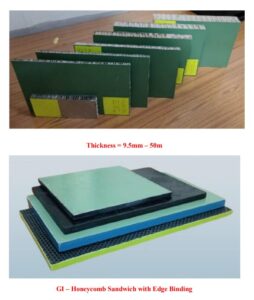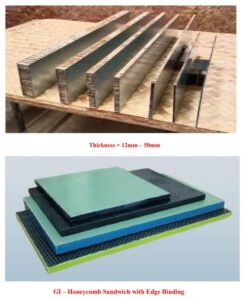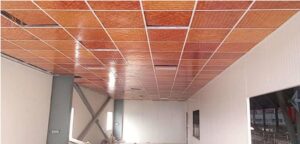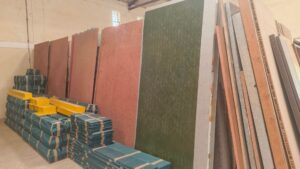In the world of engineered bamboo composite boards, surface finish plays a critical role—not just for visual appeal but for durability, performance and value. Among the advanced finishing options are coatings such as graphene polyurethane (PU) polish and decorative laminations applied to bamboo composite surfaces. These finishes elevate aesthetics, enhance mechanical and functional performance, and significantly widen application potential. Below is an in-depth look at how graphene PU polish and decorative laminations interface with bamboo composite boards, what benefits they bring, and what specifiers, architects and distributors need to know.
What Are Graphene PU Polish and Decorative Laminations?
In engineered bamboo composite board systems, the base material typically consists of resin-impregnated bamboo mat laminates or bamboo skins bonded into sheets or panels. The specification list for several bamboo composite product families mentions surface finish variants such as “Graphene Coated” and “PU Coated” boards (for example, PU coated laminated bamboo sheet of 4.0 mm thickness) in the product range.
Graphene PU Polish: This refers to a finish layer where graphene or graphene-based additives are embedded within or applied onto a polyurethane coating over the bamboo composite board. Graphene’s high mechanical strength, high thermal and electrical conductivity, and thin-layer performance improvements make it a premium enhancement in coatings. Research on natural-fibre composites incorporating graphene shows significant improvements in tensile strength, stiffness and interfacial bonding.
Decorative Laminations: These are surface layers added onto the board—could be printed decorative films, veneers, coloured laminates or PU finishes—that offer aesthetic options (colour, texture, gloss) and additional protection. The specification sheet mentions “Graphene PU / Paint” finishes for natural bamboo mat boards.
Thus, these surface enhancements turn a functional composite board into a high-finish architectural surface, capable of aesthetic and performance differentiation.
Why Surface Treatment Matters for Bamboo Composite Boards
Surface finish matters for several reasons, especially in bamboo composite systems:
Protection and durability: Bamboo skins and composite core systems have good base performance, but surface coatings protect against abrasion, UV exposure, moisture ingress, staining, and mechanical wear. A graphene-enhanced PU polish can add scratch resistance, better wear performance and longer life.
Aesthetics & premium positioning: Decorative laminations and high-quality finishes elevate the material from “generic panel” to “design-grade surface”. For luxury interiors, high visibility joinery, retail fit-outs, hospitality projects, a polished finish is decisive.
Functional enhancements: Graphene coatings can add functional value—improved thermal conductivity, wear resistance, potentially even anti-static or EMI shielding (in niche cases) thanks to graphene’s properties. Research shows graphene incorporation in natural fibre composites can yield large improvements in mechanical strength and interface bonding.
Specification flexibility: With surface finish options, the same base board can be used for a wider range of applications—from raw/unfinished for sub-surfaces to high-finish for feature elements—making procurement and inventory management simpler.
Marketing & sustainability certification: High-end finishes such as “Graphene PU polish on renewable bamboo composite” offer a strong narrative in sustainable architecture and premium specification sectors.
Key Properties & Specification Highlights from the Product-Sheet
While the primary specification sheet focuses on board thicknesses, densities and structural properties, it also enumerates finishing options. Some relevant points:
The product list includes “Natural Bamboo Mat boards/laminates 2.5–4.0 mm” in two grades: (a) Sooth surface natural colour, and (b) Graphene PU Polish/paint.
Typical board densities for laminated bamboo sheets range around 740–790 kg/m³ depending on thickness (for thinner boards) in other entries. This indicates a robust substrate that supports finishing.
The specification sheet lists “Abrasion resistant” and “Impact resistant” among material attributes. The surface finish influences these attributes significantly.
The sheet also emphasises “Eco-Friendly and Sustainable” among benefits. An advanced finish over a renewable-raw-material panel strengthens that green message.
Applications Where These Finishes Make a Big Difference
Surface finish enhancements like graphene PU polish and decorative laminations bring significant value in these applications:
High-end furniture and joinery: Cabinets, drawer fronts, wardrobes where visible surface finish matters and durability (scratch, impact) is important.
Retail and hospitality interiors: Wall panels, ceiling feature panels, displays, receptions where aesthetic finish, scratch resistance and long life are key.
Architectural panelling and wall surfaces: Large-format wall/ceiling boards in prestigious interiors where smooth, uniform, premium finish is required.
Commercial furniture and fixtures: Office fit-out, premium modular systems, feature partitions where finish quality and performance matter.
Green-building projects with visible finishes: Where exposed panels carry both performance (durability, sustainability) and visible aesthetics, the finish lets the board be showcased rather than hidden.
Pros & Considerations of Graphene PU & Decorative Laminations on Bamboo Composites
Pros
Upgraded surface durability (scratch, abrasion, wear) compared to bare board.
Enhanced aesthetic appeal enabling design flexibility (colour, gloss, texture).
Functional improvements (possible improved thermal/ electrical/ wear performance) thanks to graphene content.
Ease of specification: single board type with finish variants allows flexibility in sourcing.
High-end positioning: helps justify premium price points, differentiation in premium markets.
Considerations
Cost: Graphene-enhanced finishes and decorative lamination increase cost versus plain finish board. The value needs justification in specification.
Surface preparation and installation: Even premium finishes require correct handling, substrate flatness, correct adhesives/fasteners, edge detailing to maintain performance.
Finish variation: Decorative laminations may vary in texture/colour over batches; quality control crucial for large-area panels.
Repairability: High-finish surfaces may be less easily repaired or refinished compared to plain panels; need client awareness.
Compatibility: Ensure base board substrate is suitable for chosen finish (adhesion, expansion/contraction behaviour, environmental exposure).
Sustainability claims: While the board is renewable, finishes (PU, graphene additives, lamination films) should be audited for environmental impact if used in certified green projects.
Frequently Asked Questions (FAQs)
Q: What additional benefits does graphene PU polish add compared to regular PU polish?
A: Graphene in coatings can improve mechanical strength, scratch/abrasion resistance, thermal and potentially electrical conductivity. Studies on natural-fiber composites with graphene show large improvements in interfacial bonding, tensile and flexural strength.
Q: Can decorative laminations be applied on all thicknesses of bamboo composite boards?
A: Typically yes—but you must ensure the underlying board thickness, density and flatness are adequate for the lamination process. The base board must meet structural and dimensional stability requirements before finishing.
Q: Does the finish affect moisture or termite resistance?
A: Surface finish helps protect the board from surface ingress of moisture, staining or wear—but the board’s core material and bonding determine termite/fungus/ moisture-resistance. A good finish supports but does not replace the quality of the substrate.
Q: How should installers handle panels with decorative finishes?
A: Maintain clean, flat sub-substrate; use recommended adhesives/fasteners; protect edges and cut-outs; avoid chipping or edge damage; ensure environmental conditions (humidity/temperature) are within recommended range for both board and finish.
Q: Are there special maintenance needs for graphene PU or decorative laminate finishes?
A: Typically, premium finishes require gentle cleaning (non-abrasive cloths), avoidance of harsh chemicals or solvents, prompt repair of surface damage. The maintenance is often less intensive than visible wood veneer because the laminate/PU layer protects the substrate.
Q: How should a specifier choose between plain finish and decorative laminated/graphene finish?
A: Ask: Will the board be visible and subject to wear? Is finish quality critical to perception? Will durability or special functional properties (scratch resistance, thermal performance) matter? If yes, the upgraded finish is justified. If the panel is hidden or low-spec, plain finish may suffice.
Q: Does the presence of graphene complicate recycling or disposal?
A: Possibly—graphene-enhanced coatings may complicate recycling compared to plain boards. If end-of-life or environmental certification is critical, verify with supplier about recyclability or disposal implications.
Conclusion
The addition of graphene PU polish and decorative laminations to engineered bamboo composite boards significantly extends their value proposition. It elevates a high-performance renewable-material board into a premium architectural surface—with superior durability, superior aesthetics and enhanced functional credentials. For specifiers, architects and distributors, understanding the role of these finishes is key to making the right material choice, achieving performance goals and delivering design excellence.
When selecting or specifying these finishes, check compatibility with the board substrate, confirm performance testing/finish data, evaluate lifecycle costs and maintenance implications, and align finish selection with end-use, visibility, wear conditions and budget. With proper specification and installation, bamboo composite boards with advanced surface finishes become not just panels—but design statements.






